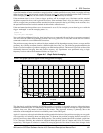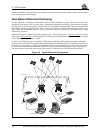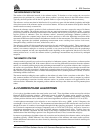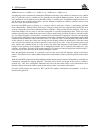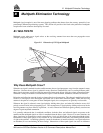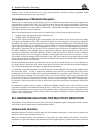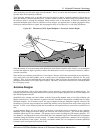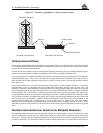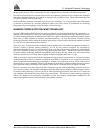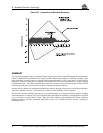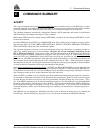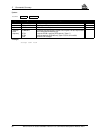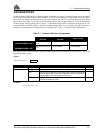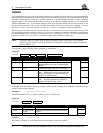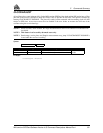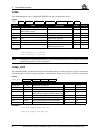
B Multipath Elimination Technology
MiLLennium GPSCard Software Version 4.50 Command Descriptions Manual Rev 1 77
the part of the GPS user. This is what makes NovAtel’s internal receiver solutions so desirable and practical.
NovAtel has placed long term concerted effort into the development of internal receiver solutions and techniques
that achieve multipath reduction, all of which are transparent to the GPSCard user. These achievements have led
to Narrow Correlator tracking technology.
It utilizes innovative patented correlator delay lock loop (
DLL) techniques. As it is beyond the scope of this manual
to describe in detail how the correlator techniques achieve the various levels of performance, the following
paragraphs will provide highlights of the advantages of this technology.
NARROW CORRELATOR TRACKING TECHNOLOGY
NovAtel’s MiLLennium GPSCard receivers achieve a higher level of pseudorange positioning "performance" vs.
standard (wide) correlator, by virtue of its celebrated Narrow Correlator tracking technology. By utilizing Narrow
Correlator tracking techniques, the MiLLennium GPSCard is capable of pseudorange measurement improvements
better than 2:1 when compared to standard correlation techniques. As well, the Narrow Correlator tracking
technology inherently reduces multipath reception (approaching a factor of eight compared to standard correlator)
by virtue of its narrower autocorrelation function.
Figure B-4, Page 78 illustrates relative multipath-induced tracking errors encountered by standard correlators vs.
NovAtel’s Narrow Correlator tracking technology. As can be seen, standard correlators are susceptible to
substantial multipath biases for
C/A code chip delays of up to 1.5 chip, with the most significant C/A code multipath
bias errors occurring at about 0.25 and 0.75 chip (approaching 80 m error). On the other hand, the Narrow
Correlator tracking technology multipath susceptibility peaks at about 0.2 chip (about 10 m error) and remains
relatively constant out to 0.95 chip, where it rapidly declines to negligible errors after 1.1 chip.
While positioning in single point mode, the multipath and ranging improvement benefits of a Narrow Correlator
tracking technology receiver vs. standard correlator are overridden by a multitude of
GPS system biases and errors
(with or without an antenna choke ring ground plane). In either case, positioning accuracy will be in the order of
40 meters
CEP (SA on, no multipath). However, the benefits of the Narrow Correlator tracking technology become
most significant during pseudorange
DGPS operation, where the GPS systematic biases are largely cancelled.
Receivers operating
DGPS with standard correlator technology typically achieve positioning accuracies in the two
to five meter
CEP range (low multipath environment and using choke ring ground plane), while NovAtel’s Narrow
Correlator tracking technology receivers are able to achieve positioning accuracies in the order of 0.75 meter
CEP
(low multipath environment and using choke ring ground plane). The Narrow Correlator tracking technology
achieves this higher accuracy through a combination of lower noise ranging measurements combined with its
improved multipath resistance when compared to the standard correlator.



